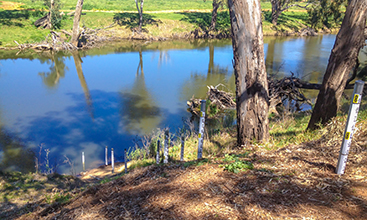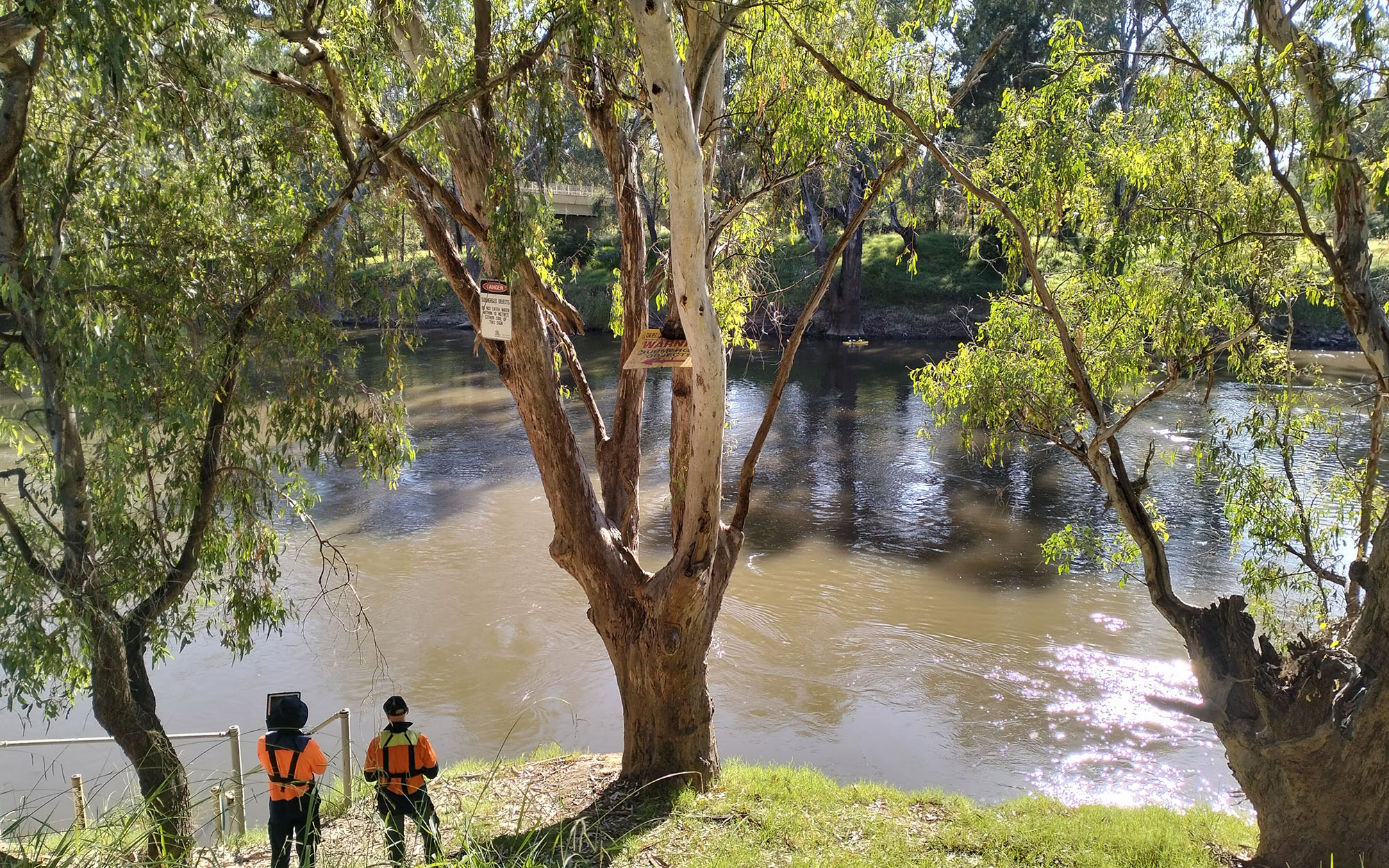Three main data types
Models are built using real-world observations and measurements within the three types below.
Spatial data include topographic (map) and land use data. We use spatial data to:
- identify which climate stations to use for rainfall-runoff modelling
- calculate drainage to gauges, dams and weirs
- determine the length between gauges.
We draw spatial data for modelling from NSW’s extensive spatial datasets, including:
Land use varies over time, so we may need to derive land use data from historical sources, such as the Spatial Collaboration Portal’s historical aerial imagery of NSW.
It’s important to be aware when collating data that spatial data might be inaccurate. For example, gauge location information might reflect where the related property is located, rather than where the gauge itself is.
Temporal data include time series climate data such as rainfall and flow data.
We obtain data from the SILO climate database, which collates rainfall gauge data from the Bureau of Meteorology (BoM). Daily rainfall is usually measured from 9am – 9am. Where necessary, we can also obtain gridded rainfall data (from 1900 on) from the BoM.
We also draw collated BoM climate station evaporation data from SILO.
Where temporal data are incomplete, we may ‘patch’ the data by interpolating other suitable data to fill the gaps, or deriving data from other sources including the Climatic Atlas of Australia.
We obtain some flow data from river gauges. Gauges are operated by various agencies, but most gauge data is available through the WaterInsights database. Gauge flow data might include:
- river levels, generally from the mid-1970s on. These can be converted to river flow if a rating curve is available
- daily flow volume, in some cases from the 1850s on
- stage-discharge ratings
- cross-section profiles.
These are data that relate to water storages that store water or regulate water flow within a river system, such as dams and weirs.
Storage data might relate to public infrastructure or to on-farm and private water storage.
We generally obtain data on storage operations from the operator. We may also derive storage data from other data, for example via a storage inflow derivation.
Data quality and review
Data may already have been assessed and assigned a quality rating when we obtain it. Recently collected data may not yet have been assessed.
Site summary reports are available for every river gauge or climate station. These help us understand each gauge or station’s history and data quality.
There may be gaps in time series data for reasons including gauge failure or maintenance. When we build a model, we infill this data to ensure a complete record. However, we do not infill missing data if we are comparing river data to modelled flows.
Short (that is, data collected across a short time period) or low-quality gauge data can still be useful in calibrating a model. For example, data across a short time period could be useful in defining effluent relationships; or a gauge that collects poor data during low flows might still be useful for an ephemeral stream.

How we analyse data
We analyse data quality by reviewing data from individual gauges by:
- checking gauge summaries for known issues
- speaking with the hydrographers responsible for the gauge or its river reach
- determining whether height readings are manual or automated
- evaluating the quality of the rating curve – are there looped ratings? Do large changes between successive rating curves indicate unstable ratings? Have few measurements been taken?
- analysing uncertainty for important gauges
- comparing data with other gauges
- visually inspecting upstream and downstream data to ensure reasonable gain and loss patterns and, where possible, comparing these
- checking for gauging shifts and analysing data consistency between nearby stations over time
- checking for outlying data and comparing data with surrounding catchments, or upstream and downstream gauges.
Data components for river system modelling
This diagram shows our usual approach to creating these river system model components:
We describe the spatial, temporal and storage data we use to build models in terms of the river system component the data represent.
These are:
Headwater inflows
Headwaters are the source of a river. Most large river systems have multiple headwaters.
In modelling, headwater inflow data relate to the parts of a river and its tributaries above the first river gauge. Headwater inflow data are an estimate of how much water flows in each tributary of a river. We calculate headwater inflow using rainfall and evaporation data, and by calibrating gauge flow.
We build the headwater components of our models with:
- measured river flow data
- rainfall runoff modelling
- storage inflow calculations.
You can learn more about headwater and how we estimate and assess inflows from the Australian Modelling Practice Notes.
Reach water balance
In modelling, a ‘reach’ is the stretch of river between 2 gauges. Reach components of our model are those data that relate to particular reaches.
They can include gauged and other inflow data.
Learn more about modelling a reach water balance in the Australian Modelling Practice Notes.
Public water storage infrastructure
These are data that relate to infrastructure such as dams and weirs that store water or regulate water flow.
Data about water storage characteristics are readily obtainable. They include:
- when the storage was built
- when and how it was upgraded (for example, by raising an embankment)
- total volume – usually, the volume at which the spillway overflows
- total surface area – also usually related to volume at the point the spillway overflows
- stage-storage data (that is, how much water is stored at different heights)
- volume-area data for calculating evaporation
- spillway capacity
- controlled release volume or discharge rate
- release volume or discharge rate as the result of flood
- ‘dead storage’ volume or the volume of water stored below the level of the lowest outlet, which is the minimum supply level.
Temporal data about water storage could include:
- inflow volume or rate
- storage volume over time
- release and extraction volume or rate
- seepage volume or rate
- spill volume or rate.
Storage inflow derivation (SID)
If we don’t have access to storage inflow data, we estimate storage inflows.
Where a dam is decades old, we might be able to calculate inflows based on historical flow records from before the dam was built.
If not, we can calculate storage inflows by balancing inputs like inflows and rainfall with outputs like evaporation and seepage. We call this Storage Inflow Derivation (SID).
We can also use the results of SID to calibrate a rainfall-runoff model for residual inflows.
You can learn more about SID from the Australian Modelling Practice Notes.
Diversion
Diversion components are data relating to water extraction for:
- irrigation
- town water use
- environmental releases
- historical water ordering
- on-farm storage.

